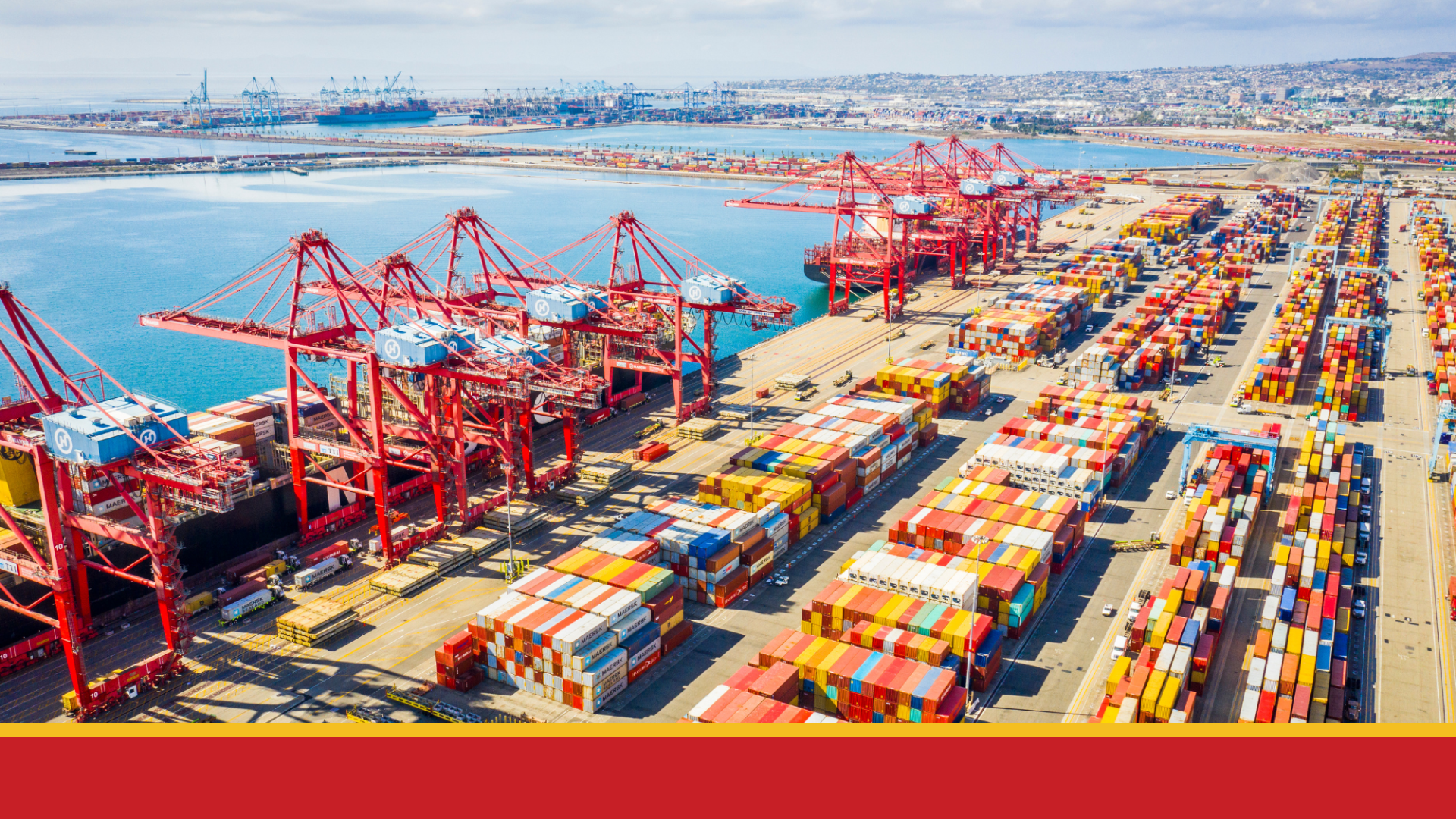 Written by: Robin Sturdivant
Written by: Robin Sturdivant
The ports in Los Angeles and Long Beach are some of the busiest in the world, accounting for more than 40 percent of the nation’s cargo. On September 30, 2021, there were 157 ships waiting for access to these southern California ports. Triple digit backlogs continued through October and into November with a record 159 ships drifting, waiting and accruing late fees per cargo container per day. What caused this unprecedented buildup of ships waiting for a berth?
LABOR SHORTAGES
Since the start of the pandemic, over 700 dockworkers from the Los Angeles and Long Beach ports have tested positive for COVID-19. Hundreds more were forced to isolate, awaiting contact tracing or test results. Tragically, more than a dozen died from the virus. The deadly infection exacerbated a backlog at the port that was created by a surge in imports of general goods.
A cargo ship is placed on quarantine if even one crew member tests positive for COVID-19. No one is allowed to leave or enter the vessel, and the shipping company is required to track and trace all employees and/or vendors who interacted with the vessel. The ship can drift or anchor, but it must complete the required quarantine before entering a berth.
While both the Los Angeles and Long Beach ports have ramped up hiring efforts, most new hires are “casual” employees (aka on-call) and not as skilled as the union workers needed to operate heavy equipment and move cargo containers from ship to port. They are confined to basic functions such as lashing vessels and driving yard tractors. It can take over a decade for casual workers to work enough hours to qualify for the extensive training, certification and union jobs that are necessary for the ports to operate at capacity.
CARGO SHIP CAPACITY AND INFRASTRUCTURE
Another often over-looked factor is the increased size of cargo ships. Since 2000, the average vessel size has more than doubled. Today’s largest container ships carry about 24,000 TEUs, or 24,000 twenty-foot containers. To provide a visual, one container can hold over 12,000 shoe boxes. Doubling the capacity of each cargo ship without making significant upgrades to port infrastructure has also contributed to the bottleneck at the ports.
Until American Rescue Plan Act (ARPA) funds were made available, California ports had not received state or federal support, despite major revenue losses due to the pandemic. Digital technologies to improve traffic flow and operations do exist but are costly. In May, $250 million in ARPA relief funding was allocated to California’s eleven seaports so clearer waters could be on the horizon.
CONSUMER SHOPPING HABITS
Consumers drastically changed their shopping habits during the pandemic, moving away from service-based spending (travel and entertainment) to durable goods. The inability to shop in-person combined with the high percentage of American households with internet access presented a major growth opportunity for online retailers. These rapid changes in consumer demand proved too much for the supply chain to keep up with.
While online sales were experiencing growth at a faster rate than traditional brick-and-mortar stores long before the pandemic, the onset of COVID-19 pushed online sales to record breaking levels. For the first time, consumers were forced to shop for both necessities (toilet paper, cleaning supplies, food, etc.) and discretionary items online. The nature of the discretionary goods changed as well; in-home gym equipment and office furniture became very popular as people were confined to their homes. The manufacturing location of trending chains and brands played a significant role in sales.
- Peloton bikes and treadmills, manufactured in Taiwan, experienced heightened demand and delayed deliveries. The company is now planning to open a factory in the U.S.
- Lululemon gained popularity as consumers opted for active wear while working from home. The company manufactures goods in several locations around the world including Peru, China, Bangladesh, Indonesia, India, Israel, Taiwan, South Korea, Malaysia, Cambodia, Sri Lanka, and Vietnam, contributing to the onslaught of goods arriving at US Ports. The company experienced shipping delays and is considering shipping by plane; while this fix will speed up delivery times it will also increase costs to an already expensive brand.
- Dick’s Sporting Goods, with vendors and factories in the U.S. and abroad, reported record growth during the pandemic. The chain attributes a portion of the growth to online ordering with curbside pick-up options. Dick’s anticipated there would be a large drop in online sales when stores reopened, but that has not been the case. The new “normal” is more active and more outdoors and Dick’s is the perfect one-stop-shop.
- While Ford and General Motors are U.S. auto makers, a global (mainly Asia) computer chip shortage forced them to significantly reduce production while new car prices soared due to demand. Sales lost are expected to be in the hundreds of billions.
The pandemic disrupted virtually every segment of the retail industry and created an incomparable sense of uncertainty. It divided retailers into two distinct groups: those with functioning e-commerce businesses and those without. Amazon, the online retail giant, further expanded its dominance in the e-commerce market by offering everything from luxury cosmetics to car parts and has established itself as the “go to” for online shopping. Target and Walmart made considerable investments into e-commerce prior to the pandemic to catch up with Amazon. Both continue to strengthen their omnichannel presence with multiple ways to shop and receive goods. Online ordering, mobile apps, contactless, same-day delivery, curbside and in-store pick up are valuable tools that make this new way of shopping even more appealing. As the country slowly returns to “normal,” it is evident many of these changes are here to stay.
OUTLOOK
To get around the supply chain crisis, some experts encourage focus on goods made in the U.S. However, as Ford and GM have modeled, some “Made in America” goods rely on raw materials produced overseas. To carry the “Made in America” label, only 55% of the component parts are required to be manufactured in the United States. So many brands claim that title (Fender, Harley Davidson, Fisher-Price, Levi’s, Ray Ban, Craftsman, etc.), but are, in-part, manufactured abroad. President Biden plans to raise the component threshold to 75% by the end of the decade.
Each sector of the supply chain is blaming the others as the source of the crisis. Even the media has been blamed for contributing to the problem, with headlines warning gifts will not be received in time for the holidays. In reality, these shortages and delays are the byproduct of problems that have existed for some time, including the pandemic, rising consumer demand, and a highly optimized, global manufacturing network that doesn’t adapt to change as quickly as consumers do.
To cope with the supply chain crisis, it’s important to remember a few simple rules:
- Don’t panic buy
- Shop early
- Shop local
- Shop small businesses
- Consider vintage or second-hand
- Consider services and/or activities as gifts





